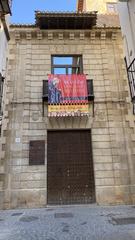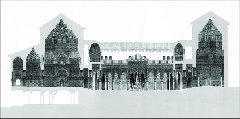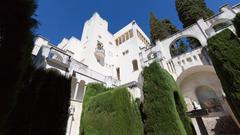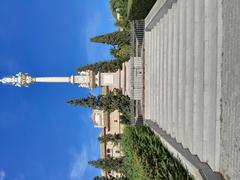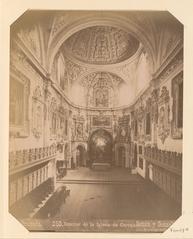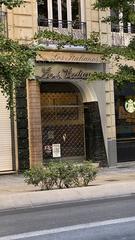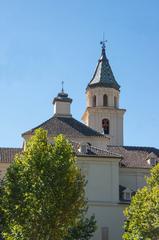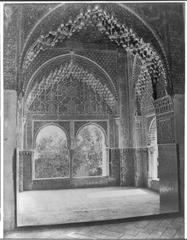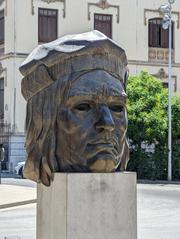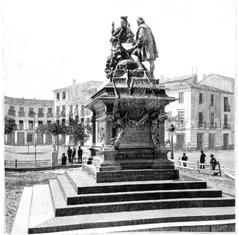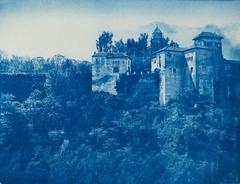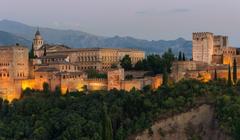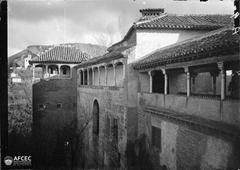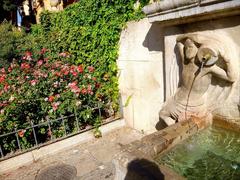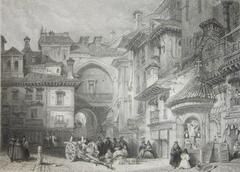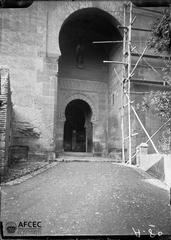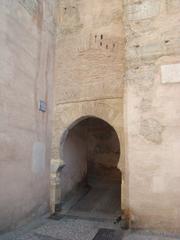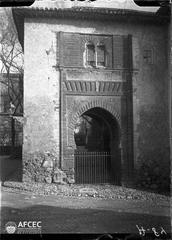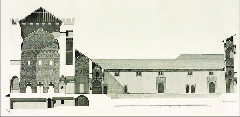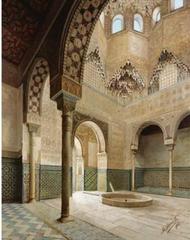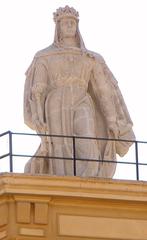
Comprehensive Guide to Visiting Granada, Province of Granada, Spain
Date: 14/08/2024
Captivating Introduction
Welcome to Granada, a city where every street corner hums with the rhythm of flamenco and ancient palaces whisper tales of sultans. Imagine walking through narrow cobblestone streets, where the aroma of grilled tapas mingles with the scent of orange blossoms, and the Alhambra’s majestic silhouette looms like a guardian of stories untold. This is Granada, a city woven from the threads of Moorish, Christian, and modern influences – a true tapestry of cultures. From the bustling markets of the 8th century Moorish conquest to the Renaissance marvels of the Christian Reconquest, Granada is a living, breathing historical narrative (Explorial). The Alhambra, with its intricate stucco work, tile mosaics, and elaborately designed gardens, stands as a testament to the city’s rich heritage (Britannica). Under the Nasrid dynasty, Granada blossomed into a masterpiece, blending Moorish and Christian influences in a breathtaking site. Picture yourself sipping a café con leche at a bustling plaza, hearing the echo of a flamenco guitar in the Albaicín’s labyrinthine streets, and tasting the rich flavors of a traditional paella. This is not just a visit; it’s an immersive journey through time and culture. From the serene Generalife Gardens to the vibrant streets of the Albaicín, Granada offers a sensory feast that captivates the heart and soul. Ready to unravel Granada’s secrets? Download the Audiala app before your visit! With beautifully crafted audio guides, expert insights, and hidden gems, Audiala is your perfect travel companion. Dive deep into Granada’s tapestry of cultures and let Audiala be your guide on this unforgettable journey.
Table of Contents
- Granada: A Tapestry of Cultures - Your Ultimate Guide
- A Captivating Introduction
- Moorish Conquest and Rule
- The Nasrid Dynasty
- Christian Reconquest
- Renaissance and Baroque Influences
- Modern Era and Restoration
- Cultural Legacy
- Local Secrets and Hidden Gems
- Sensory Descriptions and Interactive Elements
- Cultural Context and Etiquette
- Practical Information with a Twist
- Pop Culture References
- Time-Based Itineraries
- Local Lingo Lessons
- Seasonal Highlights
- Myth Busting and Surprises
- Storytelling Elements
- FAQ
- Call to Action
Granada: A Tapestry of Cultures - Your Ultimate Guide
A Captivating Introduction
Picture this: a city where the echoes of ancient empires whisper through narrow cobblestone streets, where the aroma of grilled tapas mingles with the scent of orange blossoms, and where the Alhambra’s majestic silhouette looms like a guardian of stories untold. Welcome to Granada, a city woven from the threads of Moorish, Christian, and modern influences – a true tapestry of cultures.
Moorish Conquest and Rule
In the 8th century, the Moors, Muslim Berbers from North Africa, swept across the Iberian Peninsula and claimed Granada as a jewel in their crown. Imagine the bustling markets, the call to prayer echoing from minarets, and the construction of a civilization that would transform Andalusia. For over seven centuries, the Moors left their indelible mark on Granada’s culture, architecture, and history (Explorial).
The Alhambra, a palace complex built between 1238 and 1358, is the crowning glory of this era. Wander through its intricate stucco work, tile mosaics, and elaborately designed gardens, and you’ll feel like you’ve stepped into a fairy tale (Britannica).
The Nasrid Dynasty
Under the Nasrid dynasty, the Alhambra blossomed into a masterpiece. The Nasrid Palaces, with their breathtaking Court of the Myrtles and Court of the Lions, are adorned with stucco work so detailed, it seems to breathe. Even the Generalife Gardens, perched on a hilltop, offer a serene escape with their trickling fountains and lush terraces (Explorial).
Christian Reconquest
Fast forward to 1492: the Catholic Monarchs, Ferdinand and Isabella, triumphantly enter Granada. The city’s Moorish character begins to merge with Christian influences. The Alhambra becomes the Royal Court, and it’s here that Christopher Columbus received the royal nod for his New World expedition (Wikipedia). Charles V later added Renaissance flair, with a touch of Italianate elegance, to the Alhambra, blending two worlds in one breathtaking site (Britannica).
Renaissance and Baroque Influences
Granada Cathedral, or the Cathedral of the Incarnation, stands as a Renaissance marvel in the city’s heart. Built between the 16th and 18th centuries, it’s a tapestry of artistic genius from Diego de Siloé to Alonso Cano. Wander inside to marvel at its soaring ceilings and the Royal Chapel, where Ferdinand and Isabella rest eternally (Explorial).
Modern Era and Restoration
Post-Moorish expulsion, the Alhambra fell into neglect until Romantic travelers like Washington Irving brought it back into the limelight. Today, it stands restored and revered, a UNESCO World Heritage Site (Britannica).
Cultural Legacy
Granada’s cultural tapestry is vibrant and diverse. The city’s language, music, and cuisine all bear Moorish influences. Experience the magic of a traditional flamenco show or join the locals in the annual feria, a week-long fiesta of dance, drink, and merriment (Culture Trip).
Local Secrets and Hidden Gems
Beyond the famous Alhambra and Cathedral, Granada is brimming with secrets. Visit the Carmen de los Mártires for a peaceful retreat or explore the quirky Alcaicería market, a remnant of the old Moorish bazaar. Don’t miss the Sacromonte caves, where you can catch an authentic flamenco performance.
Sensory Descriptions and Interactive Elements
Feel the sun warm your skin as you sip on a café con leche at a bustling plaza. Hear the echo of a flamenco guitar in the Albaicín’s labyrinthine streets. Smell the jasmine in the Generalife Gardens. Taste the rich flavors of a traditional paella. Touch the ancient stones of the Alhambra walls. Embark on a scavenger hunt for hidden Moorish symbols scattered throughout Granada – a fun quest that reveals the city’s layered history.
Cultural Context and Etiquette
When in Granada, greet locals with a friendly “¡Hola!” and don’t be shy to say “Gracias” often. Dress modestly when visiting religious sites and embrace the relaxed pace of life – siestas are real and cherished here.
Practical Information with a Twist
To make the most of your visit, book Alhambra tickets in advance. Think of your itinerary as a ‘Choose Your Own Adventure’ story – will you start with a morning at the Alhambra or a leisurely stroll through the Albaicín?
Pop Culture References
Granada has inspired countless artists, writers, and filmmakers. Recall scenes from “Indiana Jones and the Last Crusade” as you explore the Alhambra, or imagine yourself in Washington Irving’s tales as you walk through the palace grounds.
Time-Based Itineraries
For a day as a Moorish Sultan, begin at the Alhambra, wander through the Generalife Gardens, and end your day with a sunset view from the Mirador San Nicolás in the Albaicín. For a Christian Monarch experience, visit the Cathedral, explore the Royal Chapel, and enjoy tapas at a local plaza.
Local Lingo Lessons
Master a few local phrases: “¿Dónde está el baño?” (Where is the bathroom?), “Una tapa, por favor” (One tapa, please), and “¡Olé!” (Bravo!). These will not only help you navigate but also endear you to the locals.
Seasonal Highlights
Granada transforms with the seasons. Spring blossoms with the scent of orange trees, summer sizzles with festivals, autumn brings a golden hue to the city, and winter offers stunning snow-capped views of the Sierra Nevada.
Myth Busting and Surprises
Think the Alhambra is all there is to Granada? Think again! Discover the lesser-known Albaicín streets or the hidden courtyards of the Realejo neighborhood. Uncover the truth about the supposed hidden treasure beneath the Alhambra – a tale that adds an air of mystery to your visit.
Storytelling Elements
Granada’s history is a treasure trove of stories. From the tragic legend of the Abencerrajes in the Alhambra to the romantic escapades of Washington Irving, each corner of the city has a tale to tell.
FAQ
- What’s the best time to visit Granada? Spring and autumn are ideal for pleasant weather and fewer crowds.
- How do I get around? Walking is the best way to explore Granada’s narrow streets. Buses and taxis are also readily available.
- Is the Alhambra accessible for people with disabilities? Yes, but some areas may be challenging. It’s best to check ahead for specific access routes.
Call to Action
Ready to unravel Granada’s secrets? Download the Audiala app before your visit! With beautifully crafted audio guides, expert insights, and hidden gems, Audiala is your perfect travel companion. Dive deep into Granada’s tapestry of cultures and let Audiala be your guide on this unforgettable journey.
Welcome to Granada: A Journey Through Time and Flavor
Imagine a city where ancient palaces whisper tales of Moorish kings and every street corner hums with the rhythm of flamenco. Welcome to Granada.
Historical Significance of Granada
The Reconquista and the Fall of Granada
Granada’s history is deeply intertwined with the Reconquista, a centuries-long period during which Christian states sought to reclaim territories occupied by Muslims (Moors) since the 8th century. The Kingdom of Granada, founded in the early 13th century by Abū ʿAbd Allāh ibn Yūsuf ibn Naṣr al-Aḥmar, was the last Moorish stronghold in Spain. It fell in 1492 under the reign of Isabella I of Castile and Ferdinand II of Aragon, marking the end of Muslim rule in Western Europe (Britannica).
The Nasrid Dynasty and the Alhambra
Under the Nasrid Dynasty, which ruled Granada from 1232 to 1492, the city flourished. The Alhambra, a masterpiece of Islamic architecture, served as the residence of the Moorish rulers and is now a UNESCO World Heritage Site (History.com). Imagine walking through its intricate stucco work, lush gardens, and strategic location on Sabika Hill. It’s like stepping straight into a fairy tale.
Christian Conquest and Transformation
Following the Reconquista, Granada underwent significant changes. The Alhambra was transformed from a Nasrid palace into a Christian stronghold, symbolizing the power of the Catholic Monarchs. Monuments like the Granada Cathedral and the Royal Chapel were constructed to commemorate the Christian conquest (Third Eye Traveller). These structures, along with the city’s Mudéjar architecture, reflect the blending of Islamic and Christian influences.
Cultural Significance
A Melting Pot of Cultures
Granada is a cultural mosaic, shaped by its Islamic, Jewish, and Christian heritage. The Albaicín district, a UNESCO World Heritage Site, retains its Moorish character with narrow, winding streets and whitewashed houses (PlanetWare). For a delightful detour, explore the Alcaicería, once a Moorish silk market, now a bustling bazaar offering a variety of goods, from spices to souvenirs (Hey Explorer).
Flamenco and Gypsy Culture
Sacromonte, known for its vibrant Gypsy culture, is the birthplace of zambra flamenco. The caves of Sacromonte provide an intimate setting for flamenco performances (Travel + Leisure). Feel the passion of the dancers, hear the strumming of guitars, and let the rhythm captivate you.
Tapas Tradition
Granada is famous for its tapas culture, where patrons receive a free tapa with every drink ordered. It’s not just a meal; it’s a way of life. From jamón ibérico to patatas bravas, each bite is a culinary adventure (Spanish Sabores).
Visitor Tips
Best Time to Visit
Granada experiences a Mediterranean climate with hot summers and mild winters. To avoid the intense summer heat and large crowds, visit in late fall or early spring. During these seasons, the weather is pleasant, and attractions like the Alhambra are less crowded (Bon Traveler).
Booking Alhambra Tickets
The Alhambra is one of Spain’s most visited attractions, and tickets often sell out weeks in advance. Think of it as securing a golden ticket to Willy Wonka’s factory—plan ahead! Book tickets online well before your visit. The complex is extensive, requiring several hours to explore fully. Start early in the day to avoid the midday heat and crowds (PlanetWare).
Exploring the Albaicín and Mirador of San Nicolas
The Albaicín district is best explored on foot. Its narrow, cobbled streets are a photographer’s dream, offering picturesque views at every turn. Challenge: Find the hidden courtyard in Albaicín and snap a photo. Bonus points if you catch a local cat in the frame! The Mirador of San Nicolas provides a stunning vantage point over the Alhambra and the city, especially at sunset when the palace is illuminated (Bon Traveler).
Local Transportation
Granada’s compact size makes it easy to navigate on foot. For longer distances, taxis and buses are readily available. The city’s public transportation system is efficient, with buses connecting major attractions and neighborhoods (Nomadic Matt).
Safety and Language
Granada is considered a safe city for tourists. While Spanish is the primary language, English is widely understood, especially in tourist areas. Pro tip: When in Granada, do as the Granadinos do—never refuse a tapa! Making an effort to speak basic Spanish phrases can enhance your experience and interactions with locals (Hey Explorer).
Must-See Attractions
Alhambra and Generalife
The Alhambra is the crown jewel of Granada, featuring the Nasrid Palaces, the Alcazaba fortress, and the Generalife gardens. Each section offers a unique glimpse into the Moorish era, from the ornate stucco work of the palaces to the tranquil water features of the gardens (Lonely Planet).
Granada Cathedral and Royal Chapel
The Granada Cathedral, also known as the Cathedral of the Incarnation, is a stunning example of Renaissance architecture. Adjacent to it is the Royal Chapel, the final resting place of Isabella I and Ferdinand II. These monuments are significant for their historical and architectural value (Travel + Leisure).
Sacromonte and Flamenco Shows
Sacromonte’s cave dwellings offer a unique cultural experience. Attending a flamenco show in this historic quarter provides an intimate look at this passionate art form, deeply rooted in Andalusian culture (PlanetWare).
Sierra Nevada
For nature enthusiasts, the Sierra Nevada mountains offer a range of outdoor activities, from hiking to skiing. The proximity of these mountains to Granada allows for a quick escape into nature, providing a stark contrast to the city’s historical and cultural attractions (Nomadic Matt).
Seasonal Highlights
Granada’s charm changes with the seasons. In spring, the city bursts into a riot of colors during the Festival of the Crosses. Summer brings vibrant festivals and open-air concerts. Fall offers mild weather perfect for exploring, while winter provides the unique opportunity to ski in the Sierra Nevada and return to the city for a cozy evening by the fire.
Local Secrets and Hidden Gems
Beyond the main attractions, Granada hides many lesser-known spots. Discover the Carmen de los Mártires, a hidden garden offering serene views. Visit the quirky bookstore, Librería Praga, for a literary escape. Don’t miss the secret viewpoint at Placeta de Carvajales for a postcard-perfect view of the Alhambra.
Cultural Context and Etiquette
Granada’s rich cultural tapestry is woven with unique customs and etiquette. When ordering tapas, remember that they come free with your drink. Don’t rush—savor each bite and enjoy the leisurely pace. Greeting locals with a cheerful “¡Hola!” and saying “Gracias” often will endear you to them.
Call to Action
Granada is a city that defies simple description, a place where history, culture, and modern life intertwine to create an experience that’s both captivating and unforgettable. From the grandeur of the Alhambra to the intimate flamenco performances in Sacromonte’s cave dwellings, every corner of Granada offers a glimpse into its rich and diverse heritage (PlanetWare). The city’s vibrant tapas culture, with its mouth-watering dishes that come free with every drink, adds a unique flavor to the experience (Spanish Sabores). Whether you’re exploring the narrow, winding streets of the Albaicín, marveling at the Renaissance architecture of the Granada Cathedral, or escaping to the natural beauty of the Sierra Nevada, Granada promises a journey through time and flavor that’s unlike any other (Bon Traveler). As you prepare to explore this enchanting city, remember that Granada is not just a destination; it’s an adventure waiting to be discovered. With Audiala, you can unlock the city’s secrets and stories, gaining expert insights and discovering hidden gems that will make your visit truly memorable. So pack your bags, download Audiala, and get ready to immerse yourself in the magic of Granada. Whether you’re a history buff, a foodie, or simply a curious traveler, Granada has something special for you. ¡Hasta pronto!
References
- Explorial. (n.d.). The Moorish Legacy of Granada, Spain. Explorial
- Britannica. (n.d.). Alhambra Fortress, Granada, Spain. Britannica
- Spanish Sabores. (n.d.). Things to Know Before Visiting Granada. Spanish Sabores
- PlanetWare. (n.d.). Tourist Attractions in Granada, Spain. PlanetWare
- Bon Traveler. (n.d.). The First-Timers Guide to Granada, Spain. Bon Traveler



